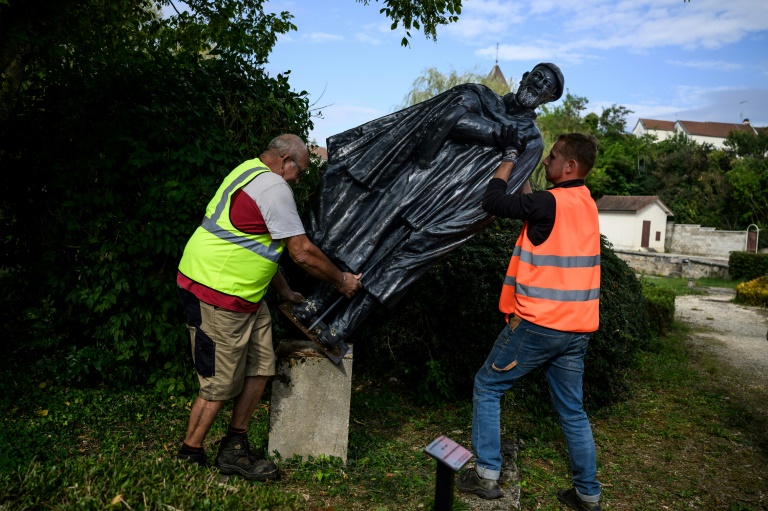Workers removed a statue of the late French charity icon Abbe Pierre from its pedestal in a small town in eastern France on Tuesday, marking his dramatic fall from grace after a spate of abuse allegations spanning five decades .
“There was no debate” about removing the life-size resin statue, Mayor Denis Mailler of Norges-la-Ville north of Dijon said.
He added that a vote last week on the village council had been “unanimous”.
Father Pierre, a Capuchin monk since 1932 and a Catholic cleric ordained since 1938, died in 2007 at the age of 94.
Born Henri Groues, Abbé Pierre (whose name means Abbé Pierre) was an icon in France — a friend of the poor and the founder of the Emmaus charities and the Abbé Pierre Foundation.
But allegations of abuse have blackened his name in recent months, with women publicly reporting assaults ranging from temptation to rape and “sexual contact with a child.”
Since the allegations emerged, many associated with the clergy have scrambled to distance themselves from their fallen hero.
At least some bishops of the Catholic Church in France knew as early as 1955-57 — almost seven decades ago — of “serious behavior towards women” by Father Pierre, the head of the country’s CEF episcopal conference, Eric de Moulins-Beaufort, wrote in Le Monde every day on Monday.
He said that “measures were taken, including psychiatric treatment” and Abbé Pierre was quietly assigned a companion to prevent him from harming himself.
This was “a robust reaction, given the way things were done at the time,” said De Moulins-Beaufort.
The removal of the statue of Abbé Pierre from the place where it stood since 2013 near the municipality of Norges-la-Ville is particularly indicative, since the village of 940 people hosts the second largest branch of the charity Emmaus in France.
Emmaus offers housing to people who are struggling or marginalized and helps them find work.
– “No problem for us” –
“Abbe Pierre represented a lot to me. He was a symbol. This is the fall of a symbol,” said Mayor Mailler.
“There was nothing else we could do, for obvious reasons.”
Mailler could not immediately say what would happen to the statue, which has been stored for now in the village workshop alongside lawnmowers and other gardening equipment.
The community of Emmaus in Norges can accommodate up to 120 marginalized people. It also hosts a drop-off and sales point for second-hand items and a recycling center.
The removal of the statue “is not a problem for us”, told AFP the owner of the center, Bernard Quaretta.
“We are an Emmaus community, not the community of Abbé Pierre.”
He said it was “up to the city council” what happens to the statue.
The local sculptor Yves Roulleau, who created the statue, was also happy that his work was released to the public.
“They let me know in advance and I had no problem accepting the decision,” Roulleau said.
When the statue was placed “France was still in shock over the death (of Abbe Pierre). After what came to light, things are completely different,” he added.
Roulleau even suggested that it might be appropriate to destroy the statue entirely, although the decision rested with the council.
Meanwhile, the producers and artistic crew behind the 2023 biopic “L’Abbe Pierre: Une vie de combats” (“Abbe Pierre: A Life of Combats”) condemned on Tuesday the “crimes” of the clergy who, they say, they were “obviously unknown.” to them and to the French when the film was shot.
“We condemn these crimes and want to strongly express our full support for the many victims of Abbe Pierre,” they said in a statement.
At the time of the film’s release, lead actor Benjamin Lavernhe said he “fell in love” with the character.
“He is a revolutionary, a man on the move who leads the crowd,” Lavernhe said.
Last year’s film was the second biopic devoted to the clergy after a 1989 effort with Lambert Wilson, known internationally for his role as Mérovingius in “The Matrix.”
burs/jh/sjw
